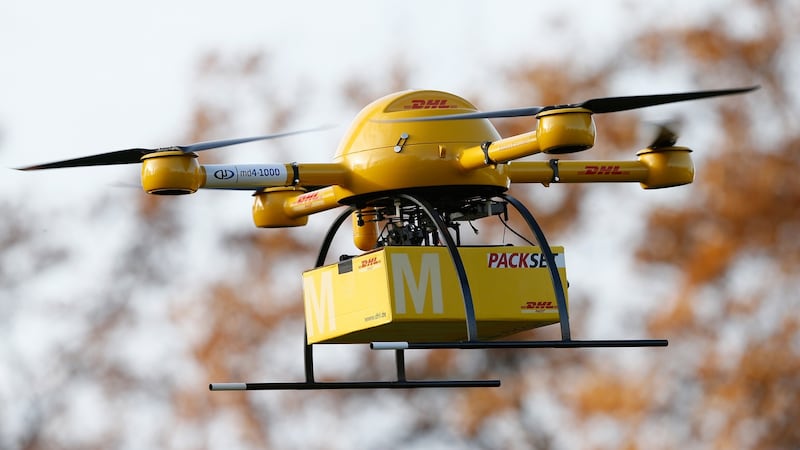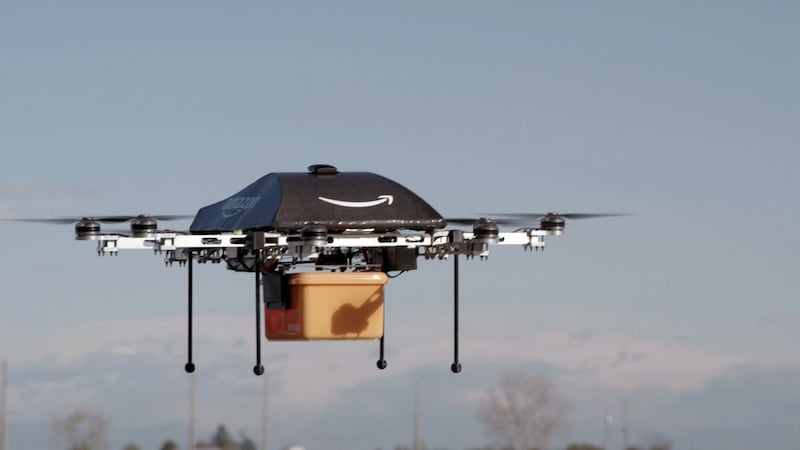In September, 1945 one and a half million New Yorkers got an impromptu day off thanks to striking elevator operators. The industrial action over pay and working hours put the higher floors of more than 2,000 skyscrapers out of reach.
With the Manhattan business community paralysed, the strike would later spread to apartment buildings; fire crews and policemen were drafted in; mail went undelivered and overburdened phone systems bent under the strain.
Something had to change. "When elevators were invented they were kind of terrifying," Steven Henn, a correspondent on NPR radio in America, said 70 years later during a recent retrospective on attitudes towards changing technology.


“I mean, think about it. You’re hanging hundreds of feet in the air by a cable. And elevator operators in those days guided the cars to level stops by hand.”
The strikes, and their ability to inflict maximum disruption on high-rise cities, at least contributed to the creation of the “driverless elevator”, something that required a shift in consumer thinking and a PR campaign endorsing the safety of vertiginous technology.
Although Henn described this development as the driverless Google car of its time, many in the drone industry also see something familiar.
Sometime within the next decade, they insist, unmanned airborne machines will swoop freely overhead delivering anything from medical supplies to pizza. The evolution of drone technology is inevitable even if it is the 21st century alternative to being hoisted 60 storeys in an unmanned box.
But if people today are edgy at the prospect of drones occupying the skies, imagine how the regulators must feel – those ultimately responsible for people’s safety and wellbeing.
Somewhere though, something has to change. “Ireland has always been fairly open and flexible about good policy for drones,” says Philip McNamara, creator of the Drones Data X Conference which switches biannually between Ireland and the US (it was in Dublin this month).
Natural fit
McNamara admires that Ireland was among the pioneers of commercial licensing systems. He sees it as an indicator the country wants to stay ahead of the curve.
“Ireland has wanted to be a leader in Europe and in the world because of what the IDA is pushing [in terms of foreign investment] and because there are so many companies around,” he says.
It seems like a natural fit. Ireland has already grabbed the tech sector by the throat, offering various incentives to make the western European, English- speaking island its home. It is an approach that could be reproduced for the drone sector and, behind the scenes, tentative steps are being taken.
“Someone has to learn to fly in the rain and the wet and Ireland would be great,” says McNamara. “The biggest challenge is night flying and going beyond the line of sight. If Ireland allowed these two situations it would make it a lot more attractive to companies.”
The complexities of “beyond line of sight” flying are among the more obstructive to the development of a commercial sector that could aspire to create thousands of direct and indirect jobs (particularly in drone-related software).
The Irish Aviation Authority’s Small Unmanned Aircraft (Drones) and Rockets Order, 2015 says users “shall not allow such an aircraft to be flown, unless otherwise permitted by the Authority . . . beyond direct unaided visual line of sight and not farther than 300 metres from the point of operation”.
“I think that will be overcome very quickly with good software and navigation systems. I think it’s about getting people to think: yes, this is safe,” McNamara says.
“The first step is to create that zone where every company can test in that five- mile block. Once people are happy with that, it can expand.”
While the regulation rules out any kind of distance-delivery applications, it is not entirely binding and depends what a company seeks to do. While drone regulation will ultimately be driven by EASA (the European Aviation Safety Agency), for now it is the preserve of individual regulators.
Amazon delivery
Speed is essential. Industry figures agree that procrastination could hand the initiative to others.
Last July, Amazon hailed the UK as a "world leader in enabling drone innovation" after reaching agreement with the Civil Aviation Authority (CAA) to bend a number of restrictive rules.
This will be crucial to realising the company’s aspiration of delivering small packages to online customers via its Prime Air drones which are capable, so far, of distances of up to 10 miles.
Critically, the CAA allowed the company go beyond line of sight as well as using one controller to fly multiple drones. The company also plans to test its “sense and avoid” technology which will be a fundamental of future commercial flight.
The restrictive nature of US regulations, and the pragmatism of the UK’s, made the move possible. Similar things are likely to happen in Ireland and speculative overtures have already been made.
Earlier this year, The Irish Times revealed an unpublished consultation document produced by Mayo County Council hoping to lure potentially lucrative drone investment.
"Global technology companies such as Google, Amazon and Facebook have taken a clear interest in drone technology," it noted. "These companies are interested in drones to facilitate mass communications in regions that remain 'offline' and deliver e-commerce purchases to customers via drone.
“Attracting high-tech companies to Co Mayo is key to creating the jobs of the future.”
This, however, is the role of IDA Ireland. It declined to comment other than to say the sector is expanding rapidly and it "will continue to talk to potential investors about the benefits of locating their businesses here".
Chief concern
Enterprise Ireland, working with indigenous companies, is currently supporting a small number of ventures.
There are of course other considerations for attracting the drone industry to Ireland. McNamara mentions the need for an appealing tax climate and development of partnerships with Silicon Valley. But ultimately, the role of testing technology – and overcoming public and regulatory prudence – is today’s chief concern.
One company that has engaged tentatively with Ireland is the start-up Flirtey. Last March it completed the first regulator-approved drone delivery in the US – a package consisting of bottled water, food and a first aid kit buzzed its way to an address in an uninhabited residential area of Nevada; an auspicious harbinger of what could be happening in housing estates all over the US within a matter of years.
"What has been preventing a commercial drone delivery industry emerging is the reluctance of aviation regulators around the world to green-light it," Flirtey founder Matthew Sweeny told Austalia Unlimited.
“And that’s in part related to a lingering suspicion around drones among the general public and their elected representatives.”
Nevertheless, investment continues apace; the future has been mapped out. Financing in the US alone, according to McNamara, has gone from $1 million at the end of 2011 to more than $100 million in mid 2015. Companies with an active interest include Amazon, Google, Facebook, Intel, Nasa, Uber and DHL.
Ireland has signalled its intentions by being among the leaders of regulation. The IAA’s 2015 rules govern the use of drones but are largely tailored towards the growing hobby sector (6,000 units have so far been registered since it became mandatory last year and that number is expected to swell on the back of Christmas sales).
The rules are clear and designed to police public safety. It seems to have worked well so far, with no major incidents to speak of. But the IAA is pragmatic and there is room in its rule book for manoeuvre.
"Regulation is not there to stop people doing things. Regulation, as we employ it, is there to ensure that whatever is done is done safely," says Ralph James, IAA director of safety regulation.
An experienced pilot and former head of the Irish Air Corps, James brings an encyclopaedic knowledge of safety mixed with a keen sense of opportunity and, crucially, the importance of opportunity.
The IAA can only be concerned with safety, as its central function, but there are ways to regulate for innovation.
“Various people have come and had conversations with us. I have explained to them . . . that we are open for business. We are not regulating them out of business, quite the reverse,” says James.
“We see regulation as being in support of business but protecting, obviously, Ireland from a safety perspective. That is our remit.”
Tellingly, though, James explains that no company has asked them about breaking line-of-sight operations. If they did, through the commercial licence process, they would sit down and listen.
A company would be required to file risk assessment complete with risk mitigation – typically including the level of training, the failure rate of specific equipment and insurance cover.
If satisfactory, James says, “we will give you a small area, let’s try it. We sit in on the test, we look at the results of the test and we develop it. It’s regulation based on risk assessment and performance.”
This apparent receptiveness has yet to be tested but it appears as if Ireland’s skies are open to foreign direct investment.
Shark patrols
Future potential, notes James, is limited only by imagination. But there is another hurdle to the sector developing tomorrow’s world.
“It needs to win the hearts and minds of people,” says James, who agrees the era of drone ubiquity is at hand.
He lists off examples of the kind of drone innovations that might start and win the PR war. An experiment in Rwanda bringing medical supplies to a remote area. Airborne shark patrols in Australia.
“It doesn’t have to be pizza,” he says. “They are running tests in the Middle East in terms of life-saving. Drones flying up and down the beach permanently, with life jackets underneath them. And any time they have run a test the drones have beaten the lifeguards.”
Companies looking to integrate drones into day-to-day life need not only convince the lawmakers. Advertising the benefits and easing the concerns of the public are a key piece of the puzzle.
It’s a bit like the arrival of unmanned elevators. Adverts showed children pushing the buttons and grandmothers safely riding the cars. There was, noted the NPR programme, soothing music and big red safety buttons.
When the people were convinced it was safe and beneficial to do so, they rode the elevators to great heights. In no time, they were accepted as part of urban reality.
“The drone industry now, I think, has got to turn around and bring people onboard,” says James. “It has to create the atmosphere where people accept that drones are going to be part of our life.”


















